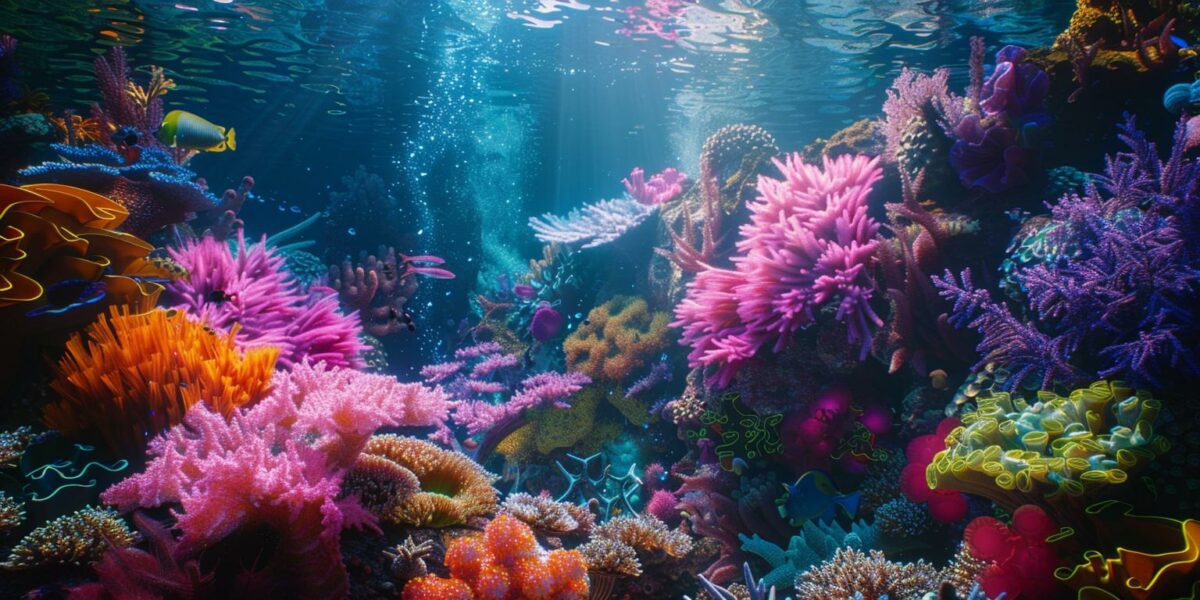Satellites: The New Guardians of Coral Reefs
With the planet warming at an alarming rate, coral reefs are in peril. However, satellites have emerged as unexpected heroes in this battle. These advanced technologies allow scientists to monitor and protect these vital ecosystems like never before, providing a bird’s-eye view that was previously impossible.
Coral reefs, often called the rainforests of the sea, are home to about 25% of marine species. This biodiversity is crucial for both ecological balance and economic benefits, generating nearly $10 trillion globally each year. In the U.S. alone, coral reefs contribute over $3 billion annually through fisheries, tourism, and coastal protection.
Beyond their natural role, coral reefs are essential for the coastal economies. They offer protection against storms and provide a habitat for fish, which supports local fisheries and tourism industries. The economic value of these services is immense, underscoring the need for their preservation.
Satellites enable researchers to gather extensive data on coral reefs, covering areas that were previously inaccessible. By analyzing satellite images, scientists can monitor water quality, detect bleaching events, and assess the overall health of the reefs. This technological advancement is a game-changer in marine conservation.
Technological Advancements and Their Impact
One of the biggest challenges in coral reef conservation was the limited coverage provided by traditional methods. Satellites have revolutionized this by offering comprehensive global maps. These maps help identify areas at risk and guide conservation efforts more effectively.
According to experts, satellite data provides critical insights into various parameters such as water color, depth, and clarity. These details help in understanding the extent and health of coral reefs, enabling targeted interventions. The ability to monitor these parameters on a large scale is invaluable for conservationists.
Key advancements enabled by satellite technology include:
- Real-time monitoring of reef health and stress levels
- Detection of bleaching events and other environmental changes
- Mapping of previously unexplored reef areas
These innovations have significantly enhanced our ability to protect and manage coral reefs. By providing timely and accurate data, satellites empower scientists to make informed decisions and take proactive measures against threats like climate change and pollution.
Global Efforts in Coral Reef Conservation
The National Oceanic and Atmospheric Administration (NOAA) has been a pioneer in using satellite technology for coral reef monitoring. Since the launch of the Coral Reef Watch program in 2000, NOAA has developed partnerships with researchers and reef managers worldwide. This collaboration has been instrumental in safeguarding coral reefs.
Greg Asner, Director of the Arizona State University Center for Global Discovery and Conservation Science, highlights the importance of satellite data in reef management. The Allen Coral Atlas (ACA) has been a crucial tool, providing comprehensive data that helps in marine spatial planning and the establishment of marine protected areas.
As the ACA continues to grow, its impact on coral reef conservation becomes more evident. The platform averages around 60,000 users annually, with significant data downloads each month. This widespread usage underscores the value of satellite data in addressing the challenges faced by coral reefs.
In April, NOAA announced a global coral bleaching event, the fourth in recorded history. Satellite imagery played a key role in confirming this event and identifying the most affected areas. Such real-time data is crucial for prompt action and mitigation efforts, highlighting the indispensable role of satellites in marine conservation.
The Future of Coral Reef Protection
The use of satellite technology in coral reef conservation is just beginning. As more advanced satellites are launched, the scope and accuracy of data will continue to improve. This will allow for even more precise monitoring and targeted conservation efforts.
Researchers are optimistic about the future, believing that satellite data will help build more resilient coral reefs. By understanding the factors that contribute to reef health, conservationists can develop strategies to mitigate the impact of climate change and other threats.
Satellite technology also aids in public awareness and education. By making data accessible to a broader audience, it fosters a greater understanding of the importance of coral reefs and the need to protect them. This increased awareness can drive policy changes and support for conservation initiatives.
Ultimately, the integration of satellite technology in coral reef conservation represents a significant leap forward. It offers a powerful tool for scientists and conservationists, enabling them to safeguard these vital ecosystems for future generations.



jade
Satellites to the rescue! Very cool tech, but what’s the environmental impact of launching more satellites?
PaisleyEnchant
Does this mean we can save all the coral reefs now? 🌊
zoeyquasar1
Thank you for the detailed post! How often do satellites send updates on reef health?
Wesley
This sounds promising, but what about privacy concerns with such extensive monitoring?
LincolnQuester
Wow, didn’t know satellites could do that! Can they also monitor other marine life?
Adeline_Luminary6
How accurate are these satellite measurements compared to traditional methods?
Oscar
Interesting article, but are there any potential drawbacks to relying on satellite data?
Adrian
Incredible! Thank you NASA for helping save our coral reefs!
Piper
Great read! But how cost-effective is this technology for ongoing conservation efforts?
annabelle
This is amazing! How exactly do satellites detect bleaching events? 🛰️